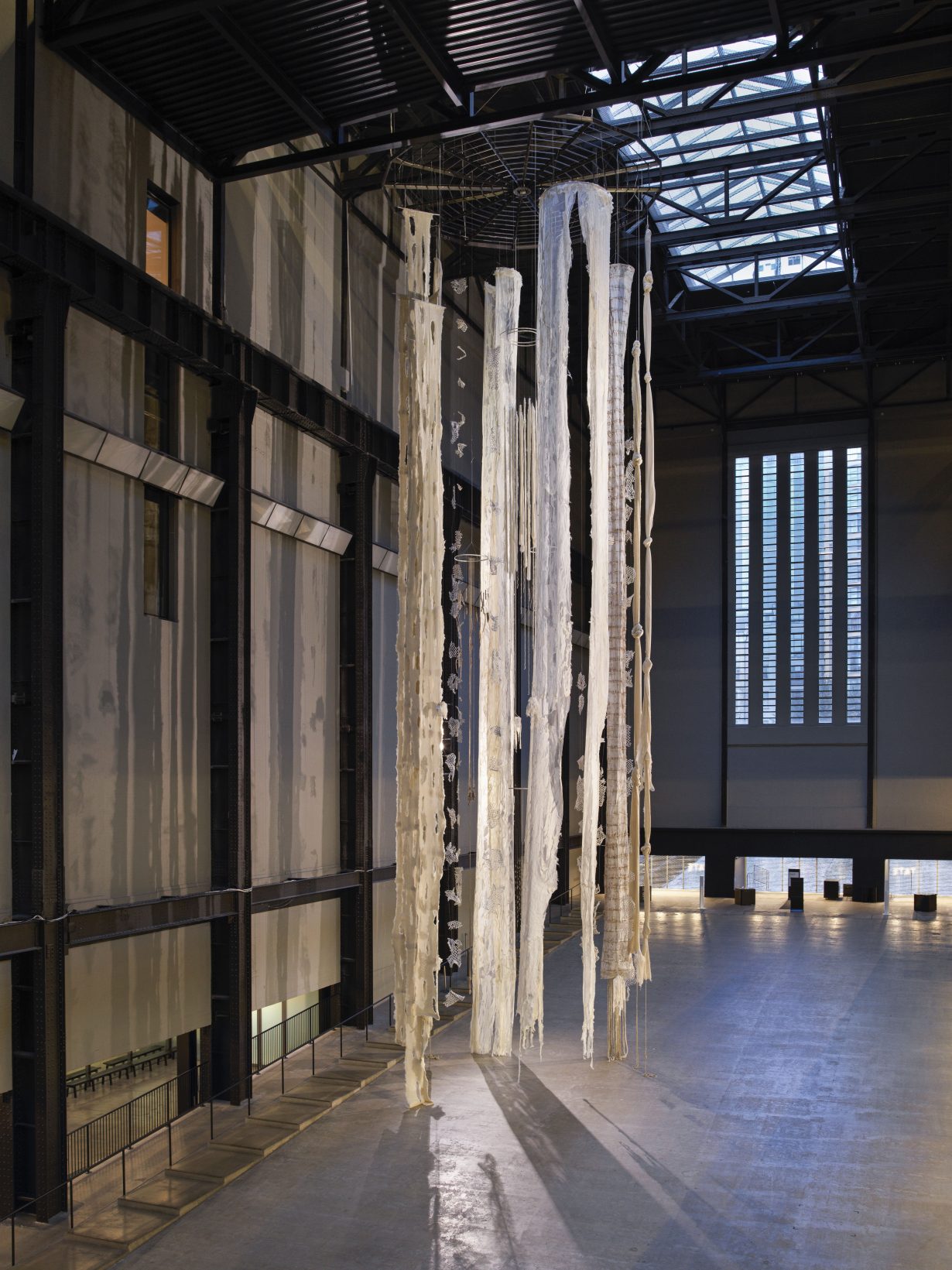The Chilean artist’s Turbine Hall commission at Tate Modern, London is an assertion of cultural resilience and ecological emergency – but leaves something to be desired
‘The point is not giving voice to a silenced past and making the invisible visible but releasing the past from its “past-ness” and letting it assume the vitality of what has always been there’, writes the theorist and art curator Ariella Aïsha Azoulay in her book Potential History (2020). Azoulay is asking why dominant history is invested in presenting as ‘dead’ the objects that help constitute people’s life-worlds – their ways of experiencing, understanding and perpetuating their own material and cultural existences. Cecilia Vicuña’s creations seem to answer this provocation. At once sculptural and audiovisual, her Brain Forest Quipu (2022), the new Hyundai commission for Tate Modern’s Turbine Hall, does not seek to reveal a ‘silenced past’ so much as to envelop the audience in the undeniable vitality of a living, breathing indigenous world-view.
Tactile and rhythmic, the showstoppers are the Dead Forest Quipu, two 27-metre-long fibrous sculptures that hang down to the floor of the Turbine Hall, allowing visitors to walk around and under its tendrils. These are made from a range of organic materials including textiles, netting and rope in shades of white, alongside assorted items collected from the banks of the River Thames by women from London’s Latin American communities. The sculpture is a large-scale iteration of Vicuña’s long-standing interest in the ancient and ongoing ritual Andean tradition of the quipu. Flourishing from 1100 to 1532 AD, quipu or khipu are recording devices fashioned from strings historically used by a number of Indigenous peoples of Andean South America, and particularly by Quechua speakers who are native to Peru. The cords and natural fibres encode numeric and other values as knots; varying colour and ply direction helps construct information via almost 100 possible combinations.

The Ethnological Museum of Berlin holds the largest collection of quipus (298 out of a globally recorded 751), which the website details as having been ‘collected’ by Wilhelm Gretzer (1847–1926), who was interested in ‘pre-Columbian archaeological finds’. Time is divided into ‘pre-’ and ‘post-’ European knowledge of a place, and theft or bad-faith trade becomes ‘collection’. This example of ‘pedagogical self-deception’, in Azoulay’s words, neutralises and therefore authorises the imperial practices through which phenomena like quipu – and the cultures they function within – have been handled. ‘Quipus were burnt, but they did not die’, Vicuña says in her introduction to the work. Evoking in places a forest burned to white ash and in others driftwood from a receding riverbed, these two quipu seem to encapsulate both that history of violence and the transformability of indigenous cosmologies. The object’s contemporaneity and cultural resilience is cemented both through Vicuna’s reinterpretation of its ancient characteristics, and by the evolution it has undergone through the incorporation of what the artist calls precarios – found and transient materials – from around its new location.

In comparison, the work’s other components struggle to hold their own for different reasons. Sound Quipu is an acoustic piece directed by Colombian composer Ricardo Gallo, and emanates from the sculptures and from under Tate Modern’s footbridge. A composite of indigenous music from various regions, ‘compositional silences’, original pieces and nature recordings, it is difficult to discern among the footsteps and chatter inevitably magnified by the largely empty Turbine Hall. Although Digital Quipu – a video collage of Survival International’s reportage on indigenous land defenders from around the world – challenges victim narratives by centering indigenous voices, its claim to ‘offer political and economic context’ for a general audience remains unfulfilled. The transnational corporations behind the destruction of Amazonian land or Adivasi livelihoods are relatively absent from the narrative, contributing to the notion that, out there in the global South, bad governments just do bad things to their people. True ‘political and economic context’ here would confront the distance cultivated by centering ‘awareness’. Feeling you know about the unfortunate conditions of others is a false substitute for political consciousness: that is, knowing how power operates to create both your own and others’ conditions, and therefore knowing our common cause.
As a result, the ecocritical and anticolonial aspects of the work – hauntingly gestured to in the powerful forms of the two sculptures – feel urgent but incomplete. While it is hard to disagree with Vicuña that ‘we must bring our heart-minds together to give life to a new forest in a spirit of reparation’, the fact remains that we are not all equally complicit in this destruction (will Lockheed Martin and ExxonMobil bring their heart-minds together with us?) and that the consequences for those who seek actual reparations have been fatal (more than 1,700 environmental activists have been murdered in the past decade). Brain Forest Quipu invites us to see indigenous life-worlds as culturally and politically alive, destroying notions of their ‘past-ness’. These precarious but still powerful cosmologies speak for themselves. The stakes of planetary destruction and historical violence, on the other hand, demand much more than our awareness.
